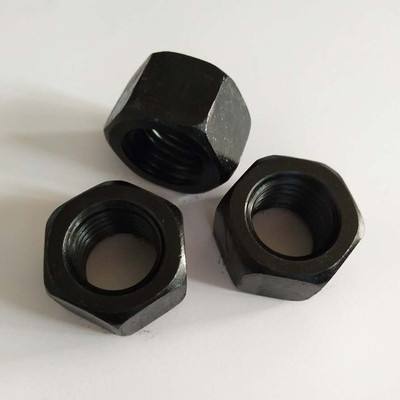According to the nominal thickness, Hex Nut is divided into three types: I type, II type, and thin type. Nuts above grade 8 are divided into two types: type 1 and type II.
Type I hexagon nuts are the most widely used. Type 1 nuts are divided into three grades: A, B, and C. Among them, grade A and grade B nuts are suitable for machines, equipment, and structures with small surface roughness and high precision requirements. Class C nuts are used on machines, equipment, or structures with rough surfaces and low precision requirements.
Type 1 nut refers to an ordinary hexagonal nut with a nominal height of m ≥ 0.8D, and its type and size should meet the requirements of GB/T6170;
The height of the type 2 nut is higher than that of the type 1 nut, and its type and size should comply with GB/T6175. There are two purposes for adding type 2 nut: one is to obtain a relatively inexpensive nut that does not require heat treatment by increasing the height of the nut.
Because D≤M16 grade 8 type 1 nuts do not need heat treatment, among grade 8 nuts, only the specifications of D>M16~39 use type 2 nuts. Obviously, type 1 nuts that do not need heat treatment cannot reach grade 9 nuts. Mechanical property requirements. Another purpose of specifying Type 2 nuts is to obtain a more ductile grade 12 nut. As the height of the nut increases, the guaranteed stress index can be achieved at a lower quenching and tempering hardness, so the toughness of the nut is increased.








